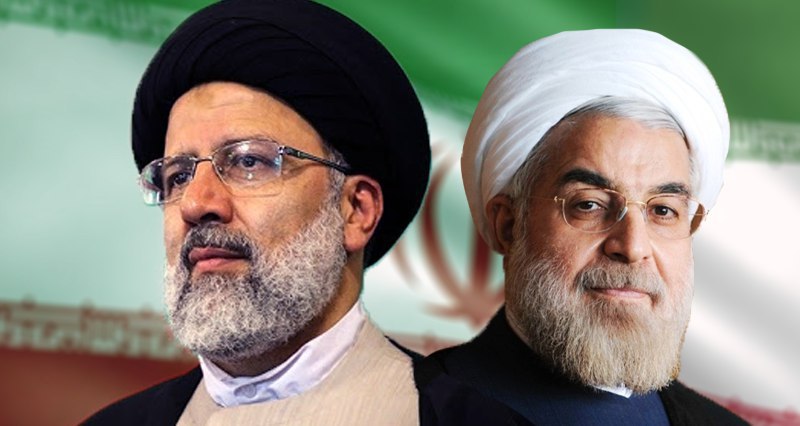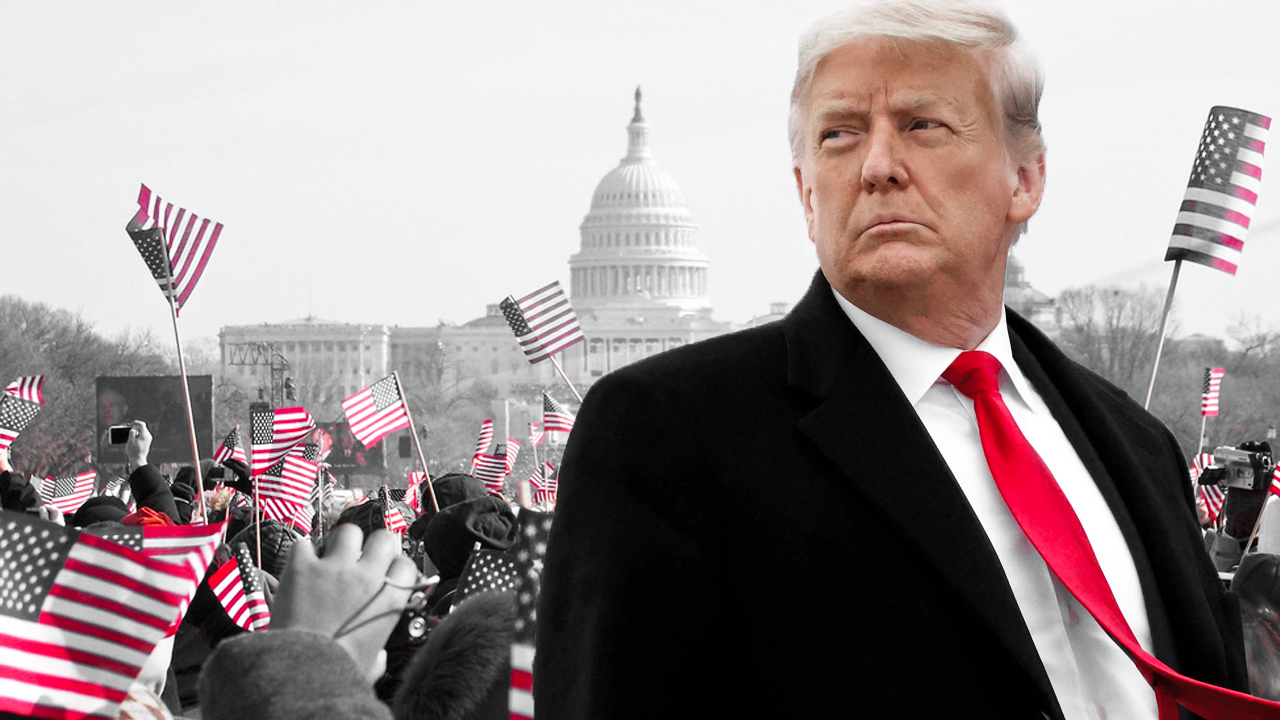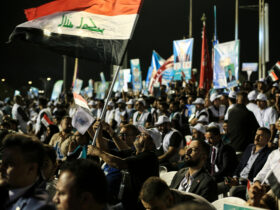BACKGROUND
Iranian officials have announced the preliminary parliamentary election results, which showed major gains for conservative forces. The Islamic Consultative Assembly (also known as the Majles) is Iran’s unicameral parliament, consisting of 290 deputies. All representatives of Iranian Parliament are elected by a direct secret ballot every four years.
According to Iranian electoral law, any Iranian citizen between the ages of 30 and 75 without any kind of notorious reputation and having achieved a master’s degree can become a deputy.
Moreover, representatives of all religious minorities (Jews, Armenian Christians and Assyrian Christians, Zoroastrians and Sunni Muslims) should have at least one representative in the Iranian parliament.
A deputy serves for four years with new elections held before the period of their office expires. Deputies may be re-elected any number of times.
The Iranian parliament is the country’s most important legislative body and independent from other branches of power: there should be no external legal influence on the decisions of the parliament.
The Consultative Assembly of Iran, in addition to serving lawmaking and budgeting functions, is also involved in the ratification of international treaties. That is why parliamentary elections are so important and one of the main electoral events for many Iranians. The elections are monitored by the Guardian Council of the Iranian Constitution and the Ministry of Internal Affairs.
Video from earlier in the day shows Iran’s Supreme Leader Ali Khamenei casting his ballot in the country’s parliamentary election, saying it is a “religious duty to vote.”#IranElectionshttps://t.co/EAl4kUcmem pic.twitter.com/nvmZwJwmy8
— Al Arabiya English (@AlArabiya_Eng) February 21, 2020
However, this year, the situation in regard to the parliamentary elections in Iran was aggravated by both external reasons (the confrontation with the US, the accidental downing of a Ukrainian passenger jet) and internal factors.
Last week, before the election date, key Iranian politicians, including Iranian President Hassan Rouhani and Supreme Leader Ayatollah Ali Khamenei, actively called on Iranian citizens to vote. According to the Iranian Students Polling Agency (ISPA), only 21% of Tehran’s residents said they would definitely go to the polls.
Voting was affected by news about the spread of coronavirus in the country.
Iran's semiofficial ILNA news agency is reporting that the death toll from the new coronavirus in the city of Qom is 50. The report on Monday says the 50 deaths took place since Feb 13. https://t.co/AuhJnjtoKQ
— The Associated Press (@AP) February 24, 2020
Two days before the parliamentary elections, Iranian authorities announced that two people who had symptoms of the disease had died in a hospital in Qom city.
https://twitter.com/FarhangNamdar/status/1231335654484848641?s=20
This was the first case of the disease being discovered in the country. Later, Iranian media outlets published information about coronavirus spreading in other cities of Iran. Polling stations in these cities, despite the danger of the epidemic spreading, were open for voting and not quarantined on election day.
#CORONAVIRUS UPDATE
Iran lawmaker @ahmadamirabadi1 reveals 50 ppl have died in Qom in past 2 weeks.
Meanwhile the Gov claims only 12 have died. Regime was aware of #COVID19 spreading but kept it secret to mobilize crowds for sham election@WHO @statedeptspox @USAdarFarsi @eu_eeas pic.twitter.com/xk1GaRCSjn— M. Hanif Jazayeri (@HanifJazayeri) February 24, 2020
According to official data from the Iranian Ministry of Health, 95 persons were infected with coronavirus with 15 ending up dead.
#Iran president:This is one of the plots by our enemies to bring country into closure by spreading much panic. We all need to carry on our job & activity. And we all need to be careful. If we see a suspicious case, we need to take him to our well equipped hospitals.#CoronaVirus pic.twitter.com/RrzyDGyIoM
— Abas Aslani (@AbasAslani) February 25, 2020
ELIGIBLE CANDIDATES
In total, over 16,000 Iranians submitted applications for participation in the parliamentary elections. After completing the registration process, all candidates were supervised by the Guardian Council of the Constitution (a special constitutionally mandated 12-member council that directly reports to Supreme Leader of Iran), which this year approved 7,148 people to participate in the election race, including nearly 800 women. This is approximately 45% of the total number of all applicants, 60% of which were not pre-selected. This year saw the highest number of disqualifications since the 1979 revolution.
Many of the candidates who were disqualified and thus unable go to the next stage of the election reported that the “green light” for special candidates from the Guardian Council “was being sold.” This caused incredible discontent and distrust among voters.
These candidates called for a complete boycott of participation in parliamentary elections.
Opponents of #Iran's theocratic leadership are urging an outright boycott of its parliamentary elections, arguing that it is anything but democratic and that casting a ballot serves only to bolster the country's religious rulers. https://t.co/0Rf5jDDeGM
— Saudi Gazette (@Saudi_Gazette) February 19, 2020
A number of politicians including President Hassan Rouhani responded critically to these actions. According to Rouhani, “Iran’s Guardian Council of the Constitution should have proven themselves to be more loyal so that more people would have taken part in the elections.” Rouhani emphasized the importance of not allowing the elections to become a “simple formality” and not to limit them, even if the authorities do not like the preferences of voters. In addition, the Iranian president noted that there had been no serious competition in 70 out of 200 electoral districts.
POWER DISTRIBUTION
There are no classical political parties in Iran and there is no clear structure or institution of party membership. The parliamentary deputies are conditionally divided into three political camps. Some adhere to conservative views (the so-called principalists or fundamentalists, also called hardliners), others adhere to reformist positions, and the third groups of deputies are moderates.
The conservatives support the theocratic system of the state and the need for state intervention to regulate Iran’s public and political life. In recent years, principalists were separated into two groups: the ultra-conservatives and conservatives. Unlike the ultra-conservatives, the conservatives are ready to continue a political dialogue with Western partners and support an agreement on the Iranian nuclear program (also known as a Joint Comprehensive Plan of Action, JCPoA). They favor a decrease in state regulation in the economy while maintaining state protectionism in certain sectors. The famous conservatives views are former Iranian President Mahmoud Ahmadinejad, Supreme Court chairman Ebrahim Raisi, speaker of Iraninan parliament Ali Ardashir Larijani and Ali Akbar Velayati, a senior adviser to Supreme Leader of Iran in foreign affairs.
Conservatives make early gains in Iran parliamentary election https://t.co/m2Tv8D9jh4 pic.twitter.com/0LdcsK1flu
— Al Jazeera English (@AJEnglish) February 22, 2020
Conservatives did not manage to be united and did not create a single group. According to observers, the most influential among them are the “Stability Front” led by Morteza Agatehrani and “the Coalition of Revolutionary Forces” led by Mohammad Bagher Galibaf.
The reformist wing advocates the democratization of the political and social system of Iranian society, including the strengthening of the Majlis role in public administration, as well as an open economy and attracting foreign investment. This camp of politicians includes, in particular, the ex-president of Iran Mohammad Khatami and the former prime minister) Mir Hossein Mousavi.
The consolidation of power by hardliners will further complicate the uphill battle for Rouhani and the moderates
Iran’s hardliners are poised for big gains in parliamentary elections, setting up a decade of hostility with the US https://t.co/Ph4UFWgAza— Massoud khodabandeh (@ma_khodabandeh) February 21, 2020
Those with moderate views support the theocratic system of the state while advocating economic liberalization, technocratic governance and diplomatic cooperation with the West. The most popular representatives of this wing is the current president Hassan Rouhani and his fraction “Omid” (Hope).
PRELIMINARY RESULTS
A distinctive feature of the current election was initially a record low number of candidates from the reformist camp. The Omid fraction of Hassan Rouhani, which had the majority in the parliament of the 10th convocation, totally failed in the parliamentary elections.
#Iran's interior minister says ‘turnout in parliamentary elections was 42.57%’ #IranElections2020 pic.twitter.com/Y0OE4ENAWv
— Press TV ???? (@PressTV) February 23, 2020
Iran’s official media announced that, according to preliminary data, three quarters of the future seats in the Majlis will be given to fundamentalists (70%), while moderates will get about 20% and reformists only 10%. Women were able to get only 17 seats, with one woman continuing to struggle for a seat in the second round.
The turn-out for these elections was the lowest since the Islamic revolution of 1979. According to Iranian Interior Minister Abdolreza Rahmani Fazli, 42% of voters (52% men and 42% women) took part in the voting. According to general statistics, more than 57.9 million people had the right to vote, of which 28.9 million were women and almost 29 million men… nonetheless, only about 24 million people ended up voting.
INNOVATION FOR THE IRANIAN PARLIAMENT
It is worth noting that during the previous elections to the Majles in 2016, an amendment to Articles 1 and 2 of Iran’s electoral Law on the conditions for holding parliamentary elections with a second round was proposed, and the new bill will be implemented for the first time this year.
As a result, some polling stations will host a second round of parliamentary elections on April 17, 2020. Those candidates who could not receive at least 20% of the vote in their polling stations are entitled to a second round in accordance with the law.
Also, according to article 5 of Iran’s electoral law, the applicant must receive at least 25% of the total number of votes in order to be elected in the first round. If several candidates win an equal number of votes, then the winner among them is determined by lot. If all candidates receive less than 25%, a second round will be held.
https://uwidata.com/8113-will-the-iranian-parliament-be-flooded-with-conservatives/
This means that among the candidates who did not receive at least one fifth of the votes in the first round, only top candidates who received the largest number of votes will run in the second.
According to this article of the Electoral Law, if the number of remaining candidates is equal to or less than the required number of delegates, a second round of elections is not held, and the candidate or candidates with the same number of votes from the first round will be selected and sent to Majles.
Note 2 of this Law says: “Nobody may stand as a candidate in more than one electoral district, otherwise his candidacy shall be deemed invalid and he may not run for parliament.”
Note 3 of article 3 of the Electoral law also provides that the Ministry of Internal Affairs, in coordination with the Guardian Council, determines and announces the time for the second round of elections within one month from the announcement of the first round results.
According to Iran’s law on the parliamentary elections, all candidates of the second round will run exclusively in the electoral district that voted for them in the first round of elections.
As a result of the 11th Iranian parliamentary election, 11 candidates from 3 electoral districts entered the second round and will continue to fight for parliamentary seats.
FORECAST
According to preliminary results, the fundamentalists (hardliners) are strongly leading and the Hope fraction of President Rouhani (most of its members run the cabinet of ministers of the current government and parliament) are faced with a very difficult situation.
The new Iranian parliament will make it impossible for President Rouhani to follow his chosen course, including openness, international dialogue, deconfliction, eliminating contradictions with the West and making concessions for the higher good. These principles were the main course of the Hope fraction. The conclusion of the JCPoA had been the culmination of this policy.
The Iranian Majlis, while led by reformists and moderates, passed major laws that the conservatives had never thought about, such as protections for the environment, ratifying international agreements allowing Iran to let foreign capital into the economy and integrating with international unions. The parliament of the Omid faction was ready to take the most unexpected step – to accept the requirements of the Palermo Convention, especially the directives of Financial Action Task Force on Money Laundering (FATF). The future parliament does not share these principles.
Iran has yet to ratify the UN’s Terrorist Financing and Palermo Conventions. As a result, the FATF calls on all countries to apply effective counter-measures against Iran. See more➡️ https://t.co/W6bd3LB8yg #FATF #FATFWeek #Iran pic.twitter.com/tTQaIccL5Z
— FATF (@FATFNews) February 21, 2020
It is worth noting that President Rouhani’s term in office is coming to an end next year. It seems likely that the new ultra-conservative parliament will be unhappy with a reformist cabinet and head of the executive branch.
There will likely be a complete reorientation of foreign policy and a return to the era of President Mahmoud Ahmadinejad in the 11th Iranian parliament, when any negotiations on the international agenda between West and Iran were simply impossible, and the fear around the nuclear program and an open Iran’s military confrontation with Israel and US satellites in the Middle East grew every day.
With such a political course, it is to be expected that Iran will finally withdraw from the nuclear agreement (JCPOA) as the conservatives were initially against making any deals with the West. In this case, Iran is not only in danger of being isolated on the international geopolitical map, but also in further danger of international sanctions imposed by both the United States and the UN Security Council. This will directly affect the country’s economic relationships and partnerships that, despite pressure from globalist structures, still supported the country (such as China and Russia). Iran’s foreign policy could change in a variety of ways, especially in the Middle East, as Iranian conservatives will never draw closer to the satellites of “the Great Satan,” which includes most of the Arab states in the Persian Gulf.

















Leave a Reply